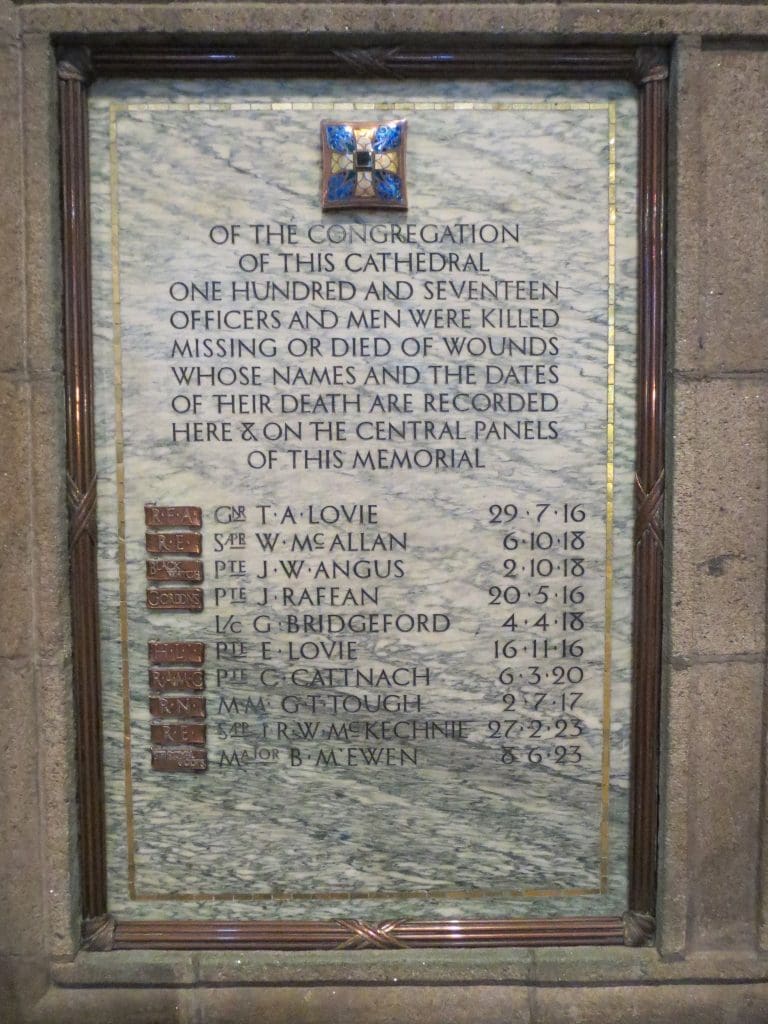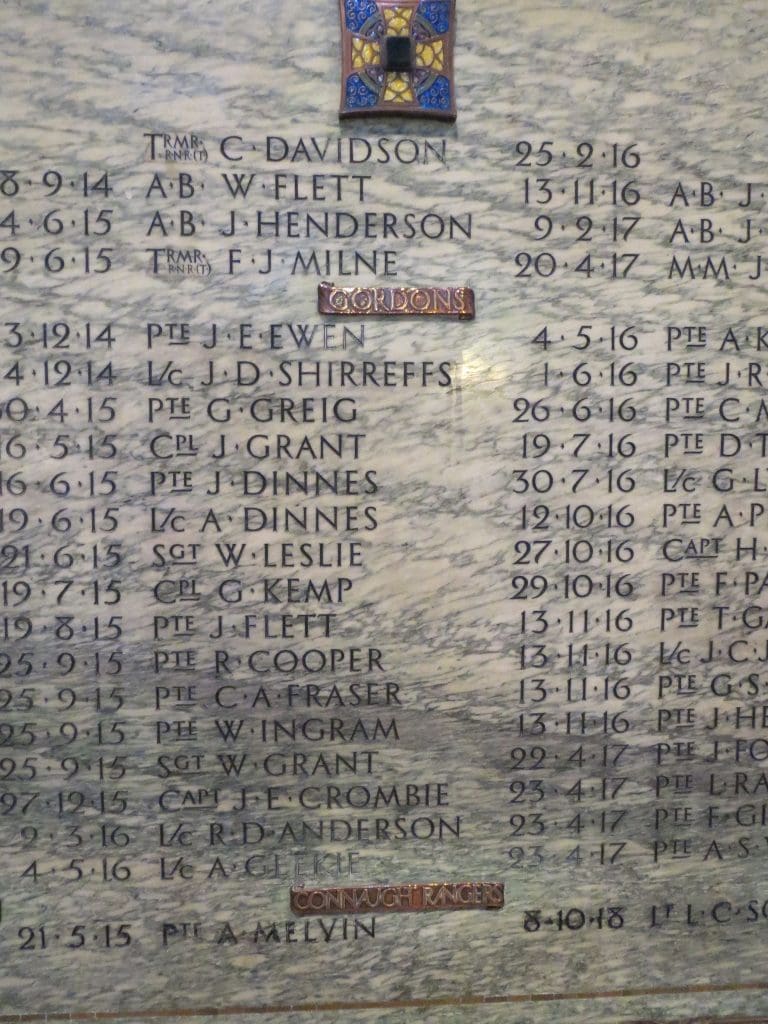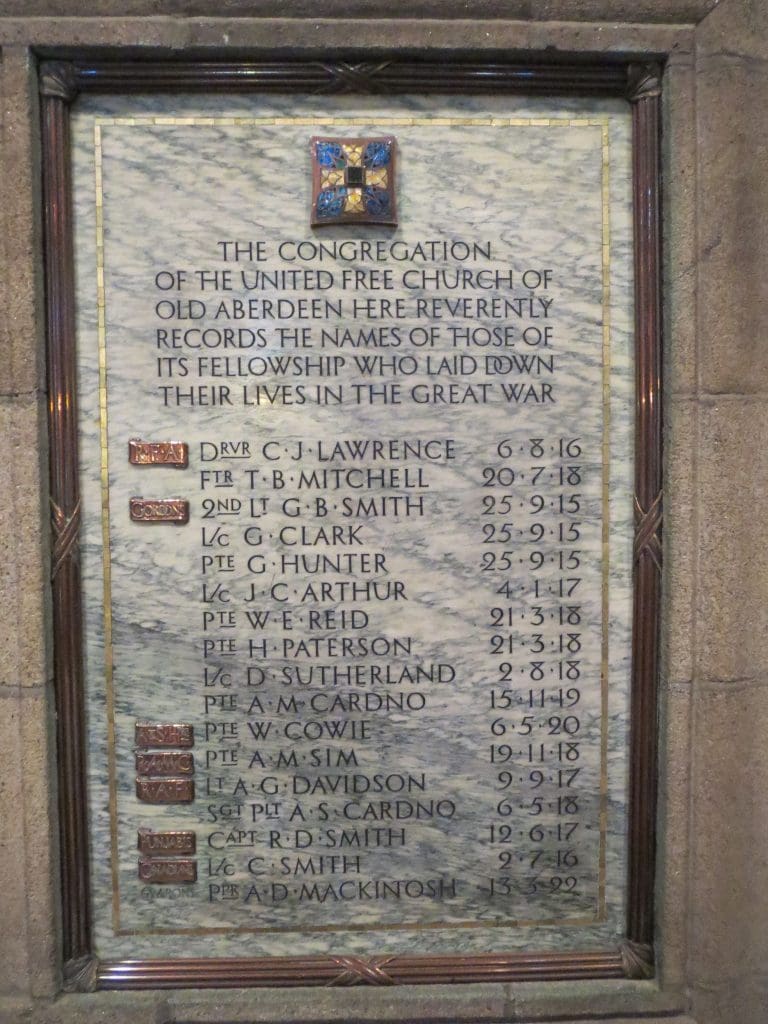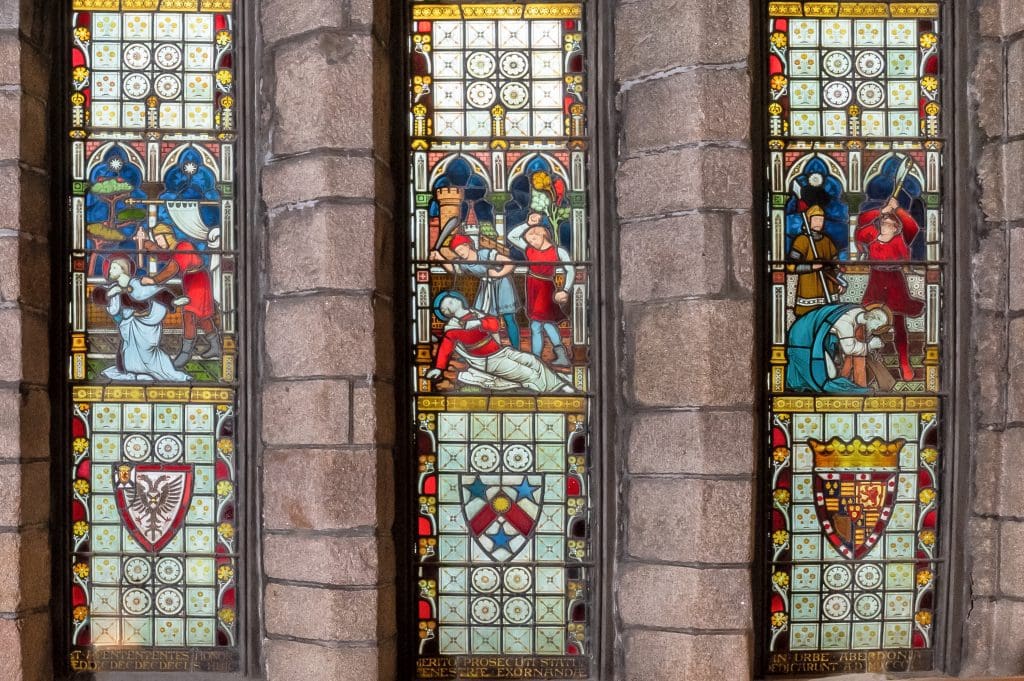Report by the War Memorial Committee to the congregation.
The War Memorial Committee now beg to report to the Congregation as follows; viz:
The Committee have held five meetings and there have also been Meetings of a Sub-Committee to consider details of the Memorial.
The Committee unanimously came to the conclusion that the most suitable form of memorial would be a stained glass window in the Cathedral, ands a tablet recording the names of the fallen; and they estimated that to carry out this scheme in a manner worthy of the Cathedral and the many historical monuments already in that ancient building a sum of £100 would be required.











